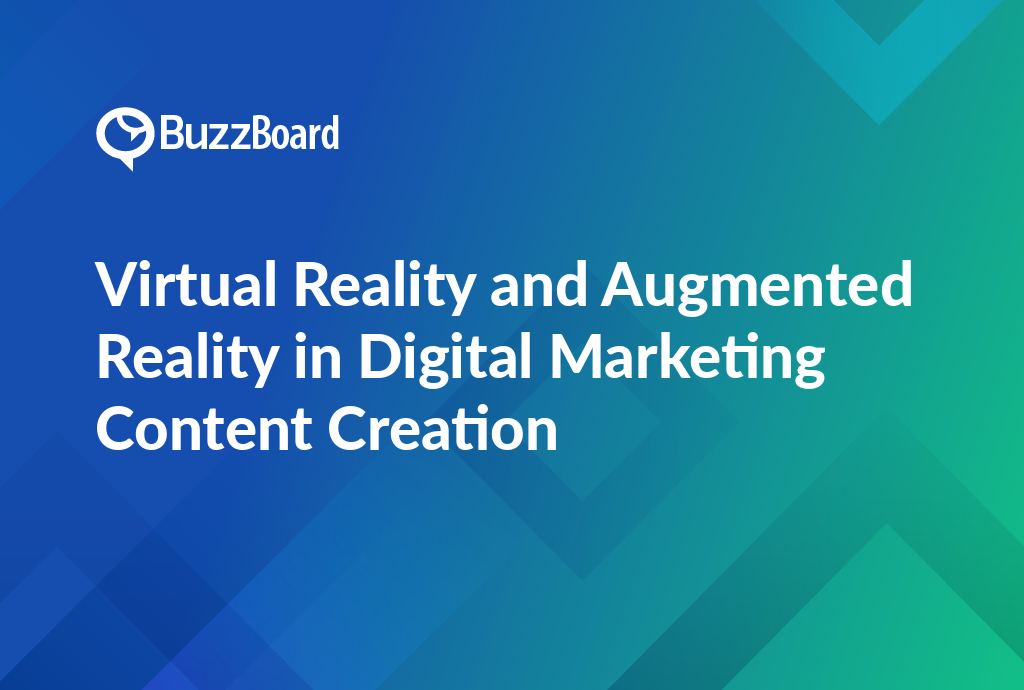Understanding the Potential of Virtual Reality and Augmented Reality in Transforming Digital Marketing Content Creation
The disruptive emergence of virtual reality (VR) and augmented reality (AR) technologies is revolutionizing the field of digital marketing content creation. Progressive digital marketing agencies are capitalizing on these immersive technologies, presenting new opportunities to expand their services and attract a wider range of small business clients.
Instead of merely offering static visuals or text blocks, VR and AR provide an interactive, three-dimensional world, catapulting marketing efforts to unprecedented heights. This could potentially overhaul traditional storytelling methods, resulting in far more engaging and appealing digital marketing campaigns for contemporary audiences.
Incorporating VR and AR into your digital marketing agency’s content creation can provide a distinct competitive edge in today’s fierce market. VR and AR can offer audiences an immersive experience, thereby increasing their engagement and enhancing the likelihood of message retention.
While the use of VR and AR in digital marketing content creation is still in its early stages, the potential of these advanced technologies is vast. As adoption rates accelerate, it is becoming essential to integrate these technologies into content strategies. Agencies that fail to embrace these emerging technologies may risk becoming obsolete in the rapidly evolving digital landscape.
Now is the time to utilize the potential of VR and AR, not only to transform the operations of your digital marketing agency but also to layer in interactivity and engagement to enhance customer experience. This, in turn, can increase brand awareness and customer loyalty.
As a digital agency, your role should not just involve anticipating this digital revolution but also actively participating in shaping its course, pioneering best practices, and setting a standard for immersive experiences in digital marketing content creation.
How VR and AR Technologies Are Reshaping Content Creation Strategies for Digital Marketing Agencies
For digital marketing agencies, the realm of opportunities for selling their services to small businesses has expanded with the introduction of virtual reality (VR) and augmented reality (AR) into digital marketing content creation. These technologies provide immersive experiences, propelling interactive content creation strategies to unprecedented heights. As a business management professional, understanding how these technologies are being utilized can help you stand out in an increasingly competitive market.
In the past, agencies may have relied on standard marketing strategies to engage customers. With the emergence of VR and AR technologies, it’s time to reassess those approaches. Virtual reality offers customers an experience that is incredibly realistic. With a headset, users can virtually explore a business’s products or services as if they were physically present. This level of engagement leaves a lasting impression.
Augmented reality, on the other hand, adds virtual elements to the real world, typically through mobile devices. For example, a potential customer could ‘place’ a piece of furniture in their home via an AR app to visualize how it would fit before making a purchase. This personalized marketing strategy aids in better decision-making and enhances customer engagement and satisfaction, transforming it into an essential tool for digital marketing agencies.
Incorporating VR and AR technologies into content creation strategies enables digital marketing agencies to offer innovative solutions that small businesses desire. However, agencies must proceed with care. The goal is to integrate these technologies in a way that complements the overall marketing strategy without overwhelming the audience.
Furthermore, ensure the content meets the end user’s needs and expectations. The VR/AR experience should be practical and not simply a novelty. Otherwise, the potential of these technologies can become a detriment.
Undoubtedly, VR and AR technologies have elevated content creation standards in digital marketing. The quicker your agency capitalizes on their potential, the better prepared you’ll be to enhance your small business client’s marketing strategy.
The Role of Immersive Experiences in Content Creation for Digital Marketing and How VR and AR Technologies Facilitate It
Over the past decade, there has been an unprecedented surge in the use of virtual reality (VR) and augmented reality (AR) technologies in digital marketing. These immersive experiences are revolutionizing content creation, prompting digital marketing agencies to explore innovative strategies to captivate their small business clients.
Generating powerful narratives through immersive experiences is an effective way to emotionally engage consumers and build robust connections. VR simulates a three-dimensional environment, immersing the user inside the content, while AR alters the user’s perception of the real world, bringing the content to them.
This ability to create emotionally resonant experiences levels the playing field for small businesses, allowing them to compete more effectively with larger establishments. By harnessing the potential of VR and AR in digital marketing content creation, agencies can formulate result-driven strategies, helping small businesses to connect with potential customers in a more personalized and impactful way.
One of the significant benefits of utilizing VR and AR technologies is their capacity to produce interactive content. As consumers increasingly seek personalized and interactive experiences, these technologies offer unparalleled potentiality. From crafting a virtual tour of a new store to designing an AR game, these groundbreaking technologies can significantly boost consumer engagement and create unforgettable brand experiences.
< p>Like any other technology, however, VR and AR present challenges. They demand a significant investment in time and resources, and creating content for VR and AR platforms necessitates specialized knowledge and skills. Therefore, digital marketing agencies must be willing to invest in these capabilities.
As technology progresses, we can anticipate greater integration of VR and AR in digital marketing campaigns, resulting in more immersive and interactive experiences. For digital marketing agencies, it’s time to embrace these advanced technologies and introduce the benefits of VR and AR to the world of small business marketing.
Exploring the Impact and Benefits of Integrating Virtual and Augmented Reality in Content Creation for Digital Marketing
In today’s era where digital transformation is rapidly progressing, incorporating virtual reality (VR) and augmented reality (AR) in digital marketing content creation is no longer merely imaginative; it’s essential. These immersive experiences’ integration provides unique opportunities and unparalleled advantages for small businesses striving to outshine their competitors.
One of the noteworthy aspects of utilizing VR and AR technologies is their ability to create a memorable and experiential encounter. As opposed to watching a video on a screen, immersion through VR and AR allows potential customers to engage actively with a product, platform, or service. This interaction leads to expanded interactions, deeper understanding, and stronger emotional connection.
According to a study by Magnifyre, 53% of respondents were more likely to purchase from a brand that employs VR than one that does not. This data implies that VR and AR can considerably enhance your digital marketing strategy’s return on investment, making it an intriguing prospect for small businesses.
Besides differentiation and engagement, contrary to popular belief, VR and AR technologies are cost-effective to integrate into marketing strategies. Numerous emerging AR and VR platforms offer budget-friendly entry points, making them more accessible to small businesses.
Remember, creating digital marketing content with virtual reality and augmented reality is not simply about using technology; it’s about creating unique, engaging narratives that resonate with your target audience, something expert marketing agencies regularly accomplish.
To kick-off, digital marketing agencies can explore various tools such as VR video, AR apps, and more, experimenting with these across various platforms to determine what resonates most with specific target audiences.
In summary, integrating VR and AR technologies into your digital marketing content provides a pathway to devise unique, engaging, and immersive experiences. These encounters not only attract attention but also stimulate customer engagement and loyalty.
<
Case Studies of Successful Use of Virtual Reality and Augmented Reality in Digital Marketing Content Creation
Virtual and augmented realities are rapidly transforming the digital marketing landscape. By integrating cutting-edge VR and AR technologies, brands and marketers are creating immersive experiences, engaging consumers in novel and compelling ways.
Take, for instance, furniture giant IKEA’s effective use of augmented reality through its IKEA Place app. The app allows customers to visualize how furniture pieces would fit within their homes before making a purchase, an innovative application of AR in content creation. It not only enhanced the overall shopping experience but also saved consumers from possible purchase regret, resulting in a substantial increase in IKEA’s sales and customer satisfaction. This vividly demonstrates how brands can use AR to deliver tangible business benefits.
Likewise, the New York Times garnered considerable attention by incorporating immersive VR technology into their content creation process. They introduced a feature titled ‘The Displaced,’ a moving narrative about displaced children around the world. This narrative adroitly exploited the empathic potential of VR, establishing a powerful emotional connection between the viewers and the content. This VR venture led to a significant rise in the number of subscriptions to the NYT’s digital platform, reinforcing the news organization’s innovative reputation.
Digital marketing agencies could offer such immersive experiences to small businesses, deploying the power of AR and VR to animate products and create engaging content that resonates with consumers. The potential for personalization and innovation that these technologies provide can profoundly enhance consumer engagement.
While VR and AR technologies in digital marketing content creation are still emerging, they offer an enormous opportunity for digital marketing agencies and their clients. Agencies must remain on the cutting edge of these technologies to provide their clients with the most innovative and effective marketing solutions.
Remember, the future of digital marketing lies within virtual and augmented reality. Are you prepared to step into the future?








